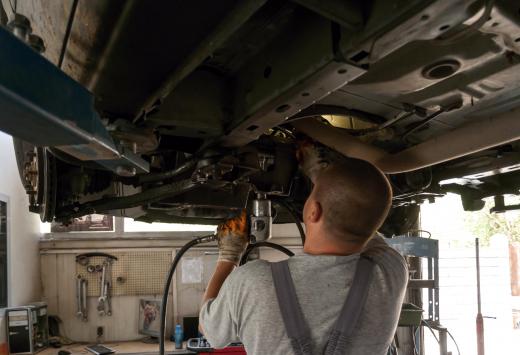A hydraulic hoist is a piece of equipment used for lifting or moving heavy or over-sized objects. Unlike traditional cranes or lifts, hydraulic hoists rely on an oil-based piston mechanism instead of a large motorized operating system. This piston mechanism allows the hydraulic hoist to lift much larger loads with a fairly small motor compared to similarly-sized cranes or hoists.
Many marinas and shipyards use a hydraulic hoist for moving boats into and out of the water. Others rely on these hoists to load and unload cargo and shipping containers from the vessel to nearby trucks or storage facilities. Manufacturing and warehouse operations may use a hydraulic hoist to move equipment or assemble and store finished products.

A hydraulic hoist can also be found in mining or excavating operations, where they lift heavy objects out of the way of workers. These hoists can also be used to erect steel or other structural components on a construction site. Some trucks and boats use hydraulic hoists for small lifting jobs, or even to convert a standard truck bed into a dump truck.

These hoists use a small electric motor to move one or more pistons within the device. As the pistons move downward, they apply pressure on a supply of oil below. Once the oil contracts to its minimum size, it transfers this pressure to the hoisting mechanism. When the pistons move in reverse, the hoist can lower or release objects as directed by the machine's operator. Most have a standard operator car, which sits along the base of the support tower.

One of the primary advantages to using a hydraulic hoist is the relative distance between the motor and the hoisting mechanism. With the motor kept at a distance, the machine can operate much more quietly than a traditional crane or lift. This makes them ideal for indoor use, or for moving theater sets in between acts without disturbing the audience. These systems also offer a large volume of lifting power compared to their small motors, as well as to their overall size.
These hoists are also associated with some potential drawbacks that buyers should be aware of. Hydraulic hoists do not operate as efficiently as other lifting devices, which could lower productivity and increase some operating costs. Like all hydraulic-based systems, these hoists are susceptible to leaks or broken seals within the oil cavities, which require extensive repair and maintenance work.
